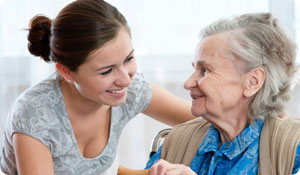
Conditions that may have been sufficient 10 years ago can be downright hazardous to aging people whose vision, hearing, strength, and reflexes are not what they used to be. Here's a checklist of some of the most important steps you can take to keep a home environment safe for seniors:
Elder-Proof the Kitchen
- Heavy countertop appliances: These can fall and cause injuries. Remove them and replace with lightweight versions if possible.
- Smoke alarms: They're critical for anyone, but particularly for older people who might take longer to become aware of a fire.
- Toxic products: Remove any toxic cleaners or substances that might be confused with each other, or with medication.
- Throw rugs: These are popular on floors in front of sinks, but they can increase the risk of trips and slips.
Elder-Proof the Bathroom
- Nonstick bath and shower mats: Water plus slick surfaces can spell trouble.
- Grab bars: These are not only important in the shower and tub to prevent sudden falls, but they're useful to have by the toilet to assist with sitting and rising.
- Nightlights: Not just for toddlers, nightlights can be invaluable for those middle-of-the-night bathroom visits. They can also mean the difference between taking the right medication and the wrong one.
- Water heater: Set the water heater to top out at 120 degrees. This will prevent scalding.
Elder-Proof Stairs and Hallways
- Threshold ramps: Unsightly floor bumps that occur at the intersection of two rooms can pose serious tripping dangers to seniors. These ramps smooth out surfaces.
- Grab bars: On staircases, these can take over where handrails end. Grab bars can be helpful when even a single step separates a den from the rest of the house.
- Motion-sensor lighting: This can assist your loved one as he walks from room to room, especially if he may have trouble finding light switches in the dark.
- Safety gates: Set up at the top and bottom of a staircase, these can prevent tumbles in those who may be unsteady on their feet.
- Electrical cords: Tuck away cords that are visible, as they're a tripping hazard.
Sources:
Elder Proof Home
www.elderlysafety.net
Seniors at Home
www.seniorsathome.org
Home Safety Council
www.homesafetycouncil.org





